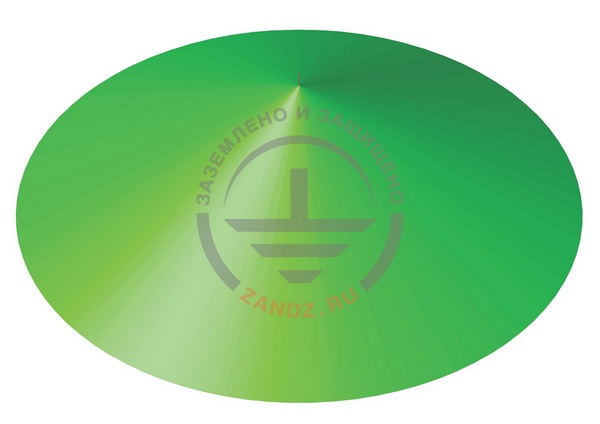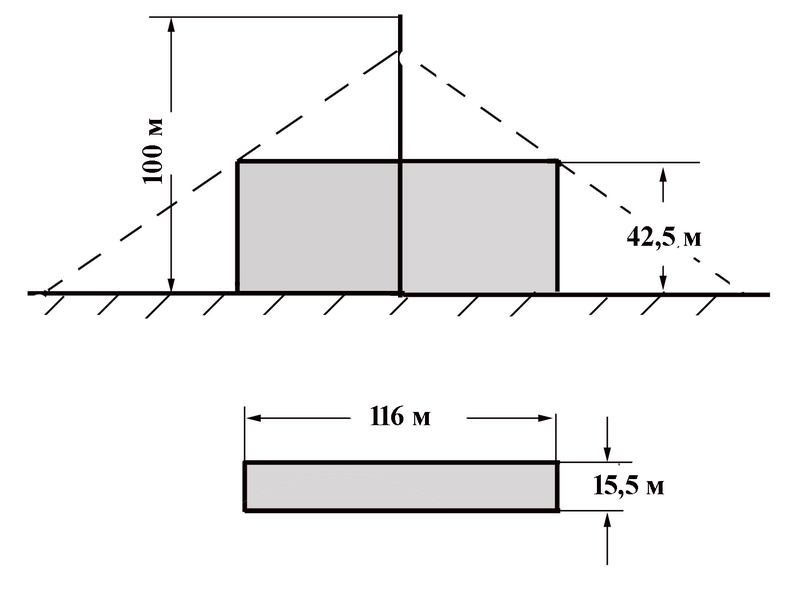This note's origin is not quite ordinary, and it is worth explaining in order to avoid surprising the reader without a good reason — especially since we've talked about the method of choosing lightning arresters based on protection zones multiple times during our webinars.
A letter from a worried website visitor was received by ZANDZ. The author of the letter used a statistical methodology to calculate the probability of a lightning breakthrough to the protected object in an online reliability calculation service, and then compared the result to the calculation of protection zones provided in the regulatory document SO-153.21.122-2003. There was absolutely no coincidence. Hence, the conclusion was made hat there was a software error. The author of the letter had no doubts about the reliability of the protection zones.
Even though the analysis of potential protection zones has been done several times during our webinars, it is crucial to develop a methodical approach to the zones once more in order to clearly identify their purpose. Let us not get into the reliability of protection zone definitions just yet. Let's focus on their methodological foundations.
A protection zone is an area around a lightning arrester, characterized in that when its volume is entirely occupied by a protected object, the zone's dependability in shielding the object from direct lightning strikes is equal to that of the zone itself.. However, the protection zone might be partially empty in the majority of real-world scenarios. Then there is an increase in the object's protection's dependability; however, it is unclear to what degree. It is obvious that the height of the lightning arrester will be chosen with a margin. However, no one can estimate this stock, which could be excessively large.
Another issue is even more undefined. The protection zone is indeed partially unfilled, but some part of the protected object extends beyond its boundary. Now, the protection zone methodology is completely unsuitable for determining the reliability of the facility's protection. Moreover, it is not intended for this purpose. This is something that needs to be addressed specifically.

It is necessary to start from the fact that the configuration and geometric dimensions of the protection zone are determined by a single number – the reliability of protection against lightning breakthroughs to the protected facility. Such a definition is fundamentally ambiguous. It is possible to find an infinite number of spatial configurations that correspond to a specific level of protection. This is not always a circular conical surface. The cone may not be circular, nor does it represent a cone, but rather another surface. If desired, one can create a zone of protection with a specific reliability in the form of an Indian elephant or a Bengal tiger. There will be no violations of the lightning protection theory here. The conical surface for the protection zone was chosen rather according to tradition. It cannot have a theoretical justification, nor does it have one. One can only cling to one qualitative circumstance – the greater the excess of the lightning rod over the object, the larger the radius of the protected area. But an infinite number of different configurations will also fit this circumstance. A circular cone is just one of the elements of the set under consideration.
Only when the object's outline boundary aligns with the zone boundary can a clear response regarding the protection's dependability be given. Why do you need a zone of protection in this situation? It is necessary to work with the object itself, and this is what the statistical methodology accomplishes.
Now let's talk about the protection zones, which are described in the Lightning Protection Instructions СO-153.21.122-2003. I'm ready to admit my "guilt" in all honesty at this point. I personally obtained all of the calculation formulas for the reliability of protection against direct lightning strikes, which range from 0.9 to 0.999, based on statistical methods used in computer calculations. The selection was limited only to the choice of empirical formulas for a more or less reliable quantitative description of computer modeling results.
Finally, a few words about the findings from comparing the reliability of protection by zones and by statistical methodology. This is not a new or original question. For example, it was thoroughly discussed in webinar No. 19 ”The origin of lightning protection zones....”, which took place back in 2017 . The results of calculation by a single rod lightning rod with a height of 30 m of the object in the form of a single tower of different heights, which was installed each time at the very edge of the protection zone with a reliability of 0.99 (the probability of a breakthrough is 0.01), were compared.
This is precisely the reliability attributed to the protected facility because the actual empty zone could not provide more reliable data. There is also the statistical methodology, which yielded an order of magnitude increase in the calculated value of protection reliability (probability of breakthrough = 0.001). It is not the error of the statistical methodology and its software that is demonstrated here, but the imperfection of the choice of lightning rods by protection zones. The majority of real-world scenarios (partially empty area volume) require it to be done with a sizable, illogical, and unquantifiable reserve. Because of this, choosing lightning rods based on zones of protection is advised to be limited to approximations during the initial stages of design.
E. M. Bazelian, Doctor of Technical Sciences, Professor.

Related Articles:



